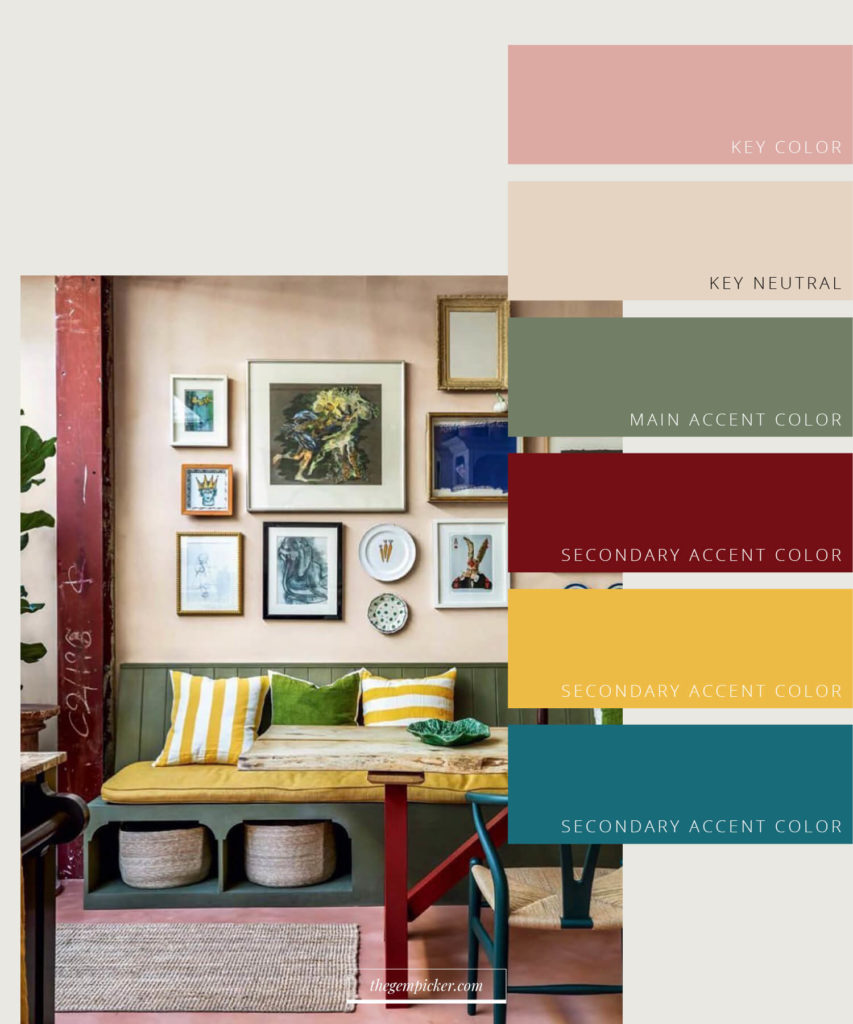
Introduction
Welcome to the world of interior colour design, where the palette you choose has the power to transform your living space into something truly extraordinary. In this article, we’ll explore the art of interior colour design and how you can use it to breathe new life into your home. From selecting the perfect hues to understanding the psychology behind colour choices, let’s dive into the fascinating realm of interior colour design and discover how you can create a space that truly reflects your personality and style.
Understanding Colour Psychology
Before delving into the realm of interior colour design, it’s essential to understand the psychology behind colour choices. Each colour has its own unique psychological effects, evoking different emotions and moods. For example, warm colours like red and orange are known to stimulate energy and passion, while cool colours like blue and green are associated with calmness and relaxation. By understanding how colours can influence mood and behavior, you can strategically use them to create the desired atmosphere in your home.
Choosing the Right Colour Palette
When it comes to interior colour design, choosing the right colour palette is key. Start by considering the overall mood and aesthetic you want to achieve in each room. Are you looking for a serene and tranquil space, or do you prefer something bold and vibrant? Once you’ve identified the mood you want to create, select a colour palette that complements it. Experiment with different combinations of hues, shades, and tones to find the perfect balance that reflects your personal style and enhances the ambiance of your home.
Creating Visual Interest with Colour
Colour is a powerful tool for creating visual interest and focal points in your home. Use contrasting colours to highlight architectural features, accentuate focal points, and draw attention to specific areas of your space. For example, paint an accent wall in a bold colour to create a striking focal point in a room, or use contrasting trim to add depth and dimension to doors, windows, and other architectural elements. By strategically incorporating colour into your design scheme, you can create a visually dynamic and engaging space that captivates the eye.
Enhancing Mood and Atmosphere
The colours you choose for your home can have a significant impact on the mood and atmosphere of each room. Soft, muted tones like pastels and neutrals create a sense of calmness and serenity, making them ideal for bedrooms, living rooms, and other spaces where relaxation is key. On the other hand, bold, vibrant colours like reds, yellows, and oranges can energize and invigorate a space, making them perfect for areas where activity and socialization are encouraged, such as kitchens and dining rooms. By selecting colours that align with the desired mood and atmosphere of each room, you can create a harmonious and cohesive living environment that promotes well-being and comfort.
Bringing Balance to Your Space
Achieving balance is essential in interior colour design to ensure that your space feels cohesive and harmonious. When selecting a colour palette, consider the principles of balance and symmetry to create a sense of equilibrium in your home. Experiment with different colour combinations and distribution techniques to achieve visual balance and harmony throughout your space. For example, if you opt for a bold accent colour in one area of the room, balance it out with softer, more subdued hues in other areas to create a sense of cohesion. By bringing balance to your space through thoughtful colour choices, you can create a visually pleasing and aesthetically pleasing environment that feels welcoming and comfortable.
Practical Considerations
In addition to aesthetics and mood, practical considerations should also play a role in your interior colour design choices. Consider factors such as lighting, room size, and function when selecting colours for your space. Lighter colours tend to reflect more light and can make small rooms feel larger and more spacious, while darker colours absorb light and can create a cozy, intimate atmosphere. Similarly, consider the function of each room when choosing colours. For example, opt for soothing, calming colours in bedrooms and relaxation areas, and choose energizing, invigorating colours in areas where activity and productivity are encouraged, such as home offices and workspaces. By taking practical considerations into account, you can ensure that your interior colour design not only looks beautiful but also enhances the functionality and livability of your space.
Expressing Your Personal Style
Ultimately, interior colour design is a deeply personal and subjective process that allows you to express your individuality and style. Don’t be afraid to experiment with different colours, patterns, and textures to create a space that truly reflects who you are and how you want to live. Whether you prefer a minimalist, monochromatic palette or a bold, eclectic mix of colours and patterns, let your personality shine through in your interior colour design choices. After all, your home is a reflection of you, so make it a space that brings you joy and inspires you every day.
Conclusion
The art of interior colour design is a powerful tool for transforming your living space into something truly extraordinary. By understanding the psychology behind colour choices, selecting the right colour palette, creating visual interest, enhancing mood and atmosphere, bringing balance to your space, considering practical considerations, and expressing your personal style, you can create a home that not only looks beautiful but also feels welcoming, comfortable, and uniquely you. So go ahead, unleash your creativity, and transform your space with the transformative power of interior colour design. Read more about interior colour design
